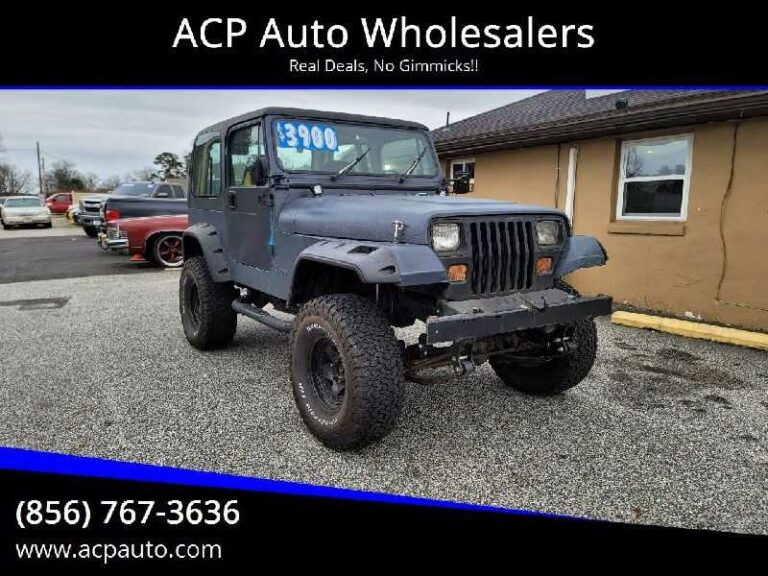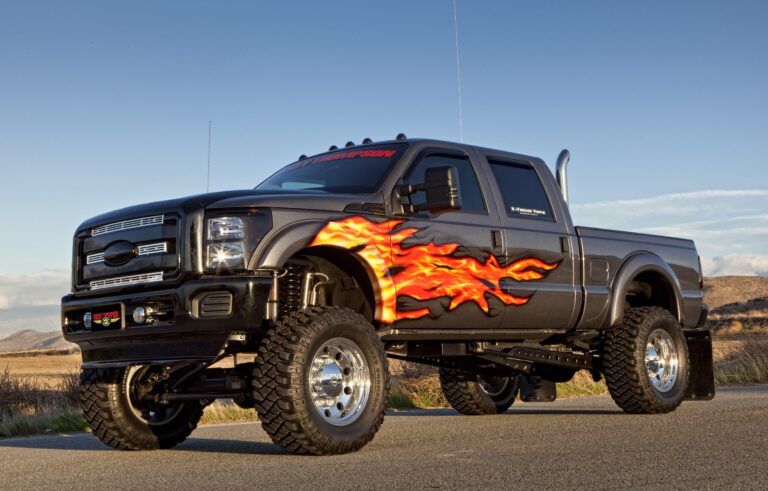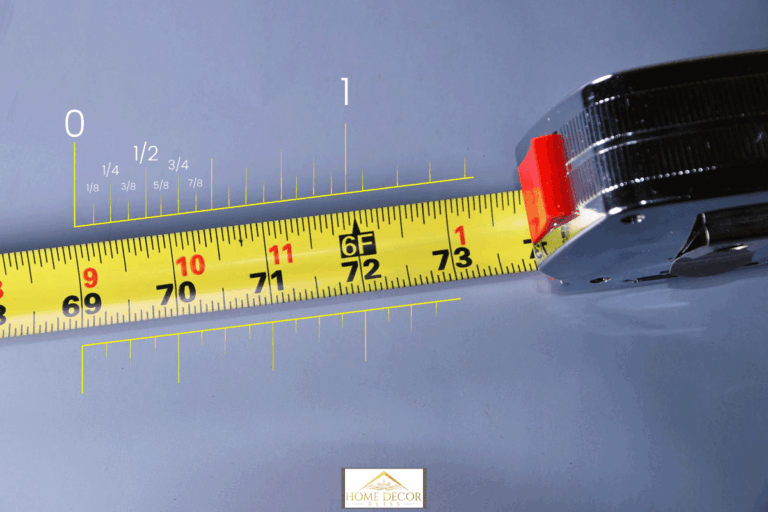Mobility Trucks For Sale: Your Comprehensive Guide to Unlocking Freedom and Utility
Mobility Trucks For Sale: Your Comprehensive Guide to Unlocking Freedom and Utility cars.truckstrend.com
For individuals requiring enhanced accessibility, the traditional minivan has long been the go-to choice for mobility conversions. However, a growing segment of the market is turning its attention to "Mobility Trucks For Sale" – robust, versatile vehicles that offer a unique blend of accessibility, utility, and commanding presence. These aren’t just trucks; they are meticulously engineered solutions designed to empower drivers and passengers with unparalleled independence, whether navigating daily commutes, embarking on adventurous road trips, or tackling demanding tasks that require serious hauling or towing capacity.
This comprehensive guide will delve into the world of mobility trucks, exploring what makes them distinct, their undeniable advantages, the various types available, crucial considerations before purchasing, and practical advice to help you navigate the buying process. If you’re seeking a vehicle that combines rugged capability with sophisticated accessibility, a mobility truck might just be your perfect match.
Mobility Trucks For Sale: Your Comprehensive Guide to Unlocking Freedom and Utility
What Defines a Mobility Truck? More Than Just a Vehicle
A mobility truck is a standard pickup truck that has undergone specialized modifications to accommodate individuals with mobility challenges, particularly those using wheelchairs or scooters. Unlike vans, which often prioritize interior space and lower entry points, trucks offer a different set of advantages, primarily their robust chassis, higher ground clearance, and inherent utility.
Key adaptations that transform a standard truck into a mobility truck include:
- Wheelchair Lifts: These are the most common adaptations, allowing a wheelchair user to enter and exit the truck’s cab or bed. Lifts can be platform-style (raising the entire chair) or hoist-style (lifting the person or chair into the vehicle).
- Ramps: While less common for cab access in traditional trucks, some specialized conversions or truck bed access systems utilize ramps.
- Securement Systems: Once inside, wheelchairs must be securely fastened to prevent movement during transit. This involves tie-downs (manual or automatic) or docking systems that lock the wheelchair into place.
- Driving Aids: For those who drive from their wheelchair or transfer to a driver’s seat, modifications like hand controls (for acceleration and braking), reduced effort steering/braking, steering knobs, and specialized gear shifters are common.
- Transfer Seats: Swivel or power transfer seats can facilitate easier transitions from a wheelchair to the driver’s or passenger seat.
- Raised Roofs/Doors: Less common than in vans, but some custom truck conversions may feature modified rooflines or wider door openings for improved head clearance or easier entry/exit.
- Bed Access Systems: Innovations allow wheelchair users to access and operate equipment directly from the truck bed, opening up new possibilities for work or recreation.

These modifications are often performed by certified mobility equipment dealers, ensuring they meet rigorous safety and quality standards.
Why Choose a Mobility Truck? The Undeniable Advantages
While mobility vans excel in many areas, mobility trucks offer distinct benefits that make them the preferred choice for a specific demographic:
- Unparalleled Utility and Towing Capacity: This is arguably the biggest differentiator. Mobility trucks retain the inherent capabilities of a pickup truck, allowing for towing boats, trailers, RVs, or hauling heavy loads in the bed. This is ideal for active individuals, contractors, or those with recreational hobbies.
- Robustness and All-Terrain Capability: With higher ground clearance and often 4×4 capabilities, mobility trucks are better suited for challenging terrains, rural areas, or adverse weather conditions that might be difficult for lower-slung vans.
- Commanding Presence and Personal Preference: For many, a truck is simply a matter of personal style and preference. Mobility trucks offer the look, feel, and elevated driving position that many truck enthusiasts desire, without sacrificing accessibility.
- Spacious Cabins: Modern pickup trucks, especially crew cab models, offer surprisingly spacious interiors, providing ample room for wheelchair users, passengers, and additional equipment.
- Versatility for Work and Play: Whether it’s for professional use requiring hauling tools, recreational activities like hunting or fishing, or simply the ability to transport larger items, a mobility truck bridges the gap between daily accessibility and robust utility.

Types of Mobility Trucks: Finding Your Perfect Match
The market for mobility trucks is evolving, offering various configurations to suit different needs:
- Full-Size Pickup Trucks (e.g., Ford F-150/250, Ram 1500/2500, Chevy Silverado/GMC Sierra): These are the most common platforms for mobility conversions due to their ample interior space, powerful engines, and high towing/payload capacities. Conversions typically focus on side-entry or rear-entry (bed access) lifts.
- Mid-Size Pickup Trucks (e.g., Toyota Tacoma, Ford Ranger): While offering less interior space and towing capacity than full-size trucks, mid-size options are more maneuverable and can be a good fit for individuals who need some utility but prefer a smaller footprint.
- Specialized Conversions: Several companies specialize in truck conversions, offering unique solutions like:
- Automotive Innovations (AI) / ATC Conversions: Known for their "truck-entry" systems where the wheelchair user enters directly into the cab, often from the side, with the truck essentially acting as a large van with a bed.
- FMI (Freedom Motors International): Offers custom truck conversions with innovative access solutions.
- Rear-Entry Bed Access Systems: These systems use lifts to bring a wheelchair user into the truck bed, often for operating equipment or simply enjoying the outdoors.
- Driver vs. Passenger Conversions: Some trucks are specifically set up for a wheelchair user to drive, while others are configured for a wheelchair passenger.
When exploring types, consider not just the truck make/model, but also the type of conversion and who performs it. Reputable converters are key to a safe and reliable mobility truck.
Key Considerations Before Making a Purchase
Buying a mobility truck is a significant investment that requires careful thought. Here are crucial factors to consider:
-
Assess Your Specific Needs:
- Wheelchair Type & Size: Manual, power, scooter? Will it fit comfortably and safely?
- Driver vs. Passenger: Will the mobility truck be driven by the wheelchair user or used primarily for transport?
- Number of Passengers: How many people need to travel regularly?
- Usage: Daily commute, long trips, off-road, work, recreation?
- Towing/Hauling Requirements: What will you be towing or carrying?
- Physical Capabilities: Are you able to transfer, or do you need to remain in your chair?
-
Budget and Financing: Mobility trucks are often more expensive than standard trucks due to the extensive modifications.
- New vs. Used: New trucks offer warranties and the latest technology, but used trucks can provide significant savings.
- Conversion Cost: This is often a separate, substantial cost from the base vehicle.
- Financing Options: Explore traditional auto loans, personal loans, and specialized mobility financing programs. Look into grants from non-profits, state vocational rehabilitation programs, and VA benefits if applicable.
-
New vs. Used Mobility Truck:
- New: Full factory warranty, latest safety features, customizable conversion, potentially higher resale value down the line.
- Used: Lower upfront cost, depreciation already occurred, wider selection of pre-converted vehicles. However, inspect conversion thoroughly, check maintenance records, and be aware of potentially expired warranties on the conversion equipment.
-
Conversion Quality and Certification:
- NMEDA QAP (Quality Assurance Program): Always look for a mobility dealer certified by the National Mobility Equipment Dealers Association (NMEDA) under their QAP. This ensures adherence to industry best practices, safety standards, and quality installations.
- ADA Compliance: While not always strictly necessary for private use, ADA compliance ensures accessibility standards are met.
-
Vehicle Condition (Especially for Used): Beyond the conversion, inspect the truck itself.
- Mechanical Inspection: Have an independent mechanic inspect the engine, transmission, brakes, suspension, and tires.
- Rust and Body Damage: Check for structural integrity, especially in areas where the frame might have been modified.
- Maintenance Records: Request full service history for the vehicle.
-
Test Drive:
- With All Equipment: Bring your wheelchair or scooter and any other essential mobility aids to ensure everything fits and operates smoothly during the test drive.
- Typical Routes: Drive on roads you typically use, including highways, city streets, and any challenging terrain.
- With Passengers: If others will regularly ride with you, ensure they are comfortable.
-
Warranty and Service: Understand the warranties for both the truck chassis (manufacturer’s warranty) and the mobility conversion equipment (installer’s warranty, component manufacturer’s warranty). Know where you can get the truck and its specialized equipment serviced.
The Buying Process: A Step-by-Step Guide
- Assess & Prioritize: Make a detailed list of your non-negotiable needs vs. desirable features.
- Research & Locate:
- Specialized Mobility Dealers: These are your best resource, offering expertise, certified conversions, and service.
- Online Marketplaces: Websites like MobilityWorks, VMI, AMS Vans, or even general classifieds (Craigslist, AutoTrader) may list mobility trucks.
- Manufacturer Websites: Some truck manufacturers partner with mobility converters.
- Get Quotes & Compare: Don’t settle for the first option. Get quotes from multiple dealers/converters.
- Thorough Inspection: Beyond your visual inspection, insist on a pre-purchase inspection by an independent mechanic and, crucially, a NMEDA QAP certified technician for the conversion.
- The Test Drive: As emphasized, this is critical. Simulate real-world usage.
- Financing & Insurance: Secure your financing. Inform your insurance provider about the mobility modifications, as they often require additional coverage.
- Finalize Purchase & Paperwork: Review all contracts, warranties, and transfer of title. Ensure all necessary user manuals for the conversion equipment are provided.
Financing Your Mobility Truck: Making It Affordable
The cost of mobility trucks, particularly new ones with extensive conversions, can be substantial. However, various avenues can help make them more accessible:
- Traditional Auto Loans: Banks, credit unions, and even some mobility dealers offer financing.
- Manufacturer Rebates/Programs: Some truck manufacturers offer special incentives or rebates for purchasing and converting their vehicles for mobility use.
- Government Programs:
- Veterans Affairs (VA): Eligible veterans can receive grants for vehicle modifications.
- State Vocational Rehabilitation Programs: These programs often assist individuals with disabilities in obtaining vehicles for employment or independence.
- Non-Profit Organizations: Many organizations focused on specific disabilities (e.g., Multiple Sclerosis Society, Muscular Dystrophy Association, United Cerebral Palsy) offer grants or financial assistance programs.
- Crowdfunding: Platforms like GoFundMe can be used to raise funds from friends, family, and the wider community.
Maintaining Your Mobility Truck: Ensuring Longevity and Safety
Proper maintenance is paramount for any vehicle, but especially for a mobility truck where specialized equipment is crucial for safety and independence.
- Regular Vehicle Maintenance: Adhere to the manufacturer’s recommended service schedule for oil changes, tire rotations, brake checks, and other standard vehicle maintenance.
- Specialized Conversion Maintenance: The lifts, ramps, and securement systems require their own specific maintenance.
- Regularly inspect for wear and tear, loose components, or unusual noises.
- Lubricate moving parts as per the manufacturer’s instructions.
- Have the conversion equipment professionally serviced by a NMEDA QAP certified technician at recommended intervals (often annually). This ensures all safety features are functioning correctly.
- Cleanliness: Keep the interior, especially around the mobility equipment, clean to prevent debris from interfering with moving parts.
Challenges and Solutions in the Mobility Truck Market
While offering immense benefits, mobility trucks do present some challenges:
- High Cost:
- Solution: Explore all financing, grant, and assistance programs. Consider a well-maintained used mobility truck.
- Limited Availability: The market for mobility trucks is smaller than for vans, meaning fewer options.
- Solution: Be prepared to broaden your search, potentially nationally. Work with a specialized mobility dealer who can help source or custom-build a vehicle.
- Finding Qualified Technicians: Not all mechanics are equipped to service mobility conversions.
- Solution: Always use NMEDA QAP certified dealers and service centers for any work on the conversion equipment.
- Potential Resale Value: Due to their specialized nature, mobility trucks might have a smaller resale market.
- Solution: Proper maintenance and documentation of services can help retain value.
Illustrative Mobility Truck Price Ranges (USD)
Prices for mobility trucks are highly variable and depend on numerous factors including the truck’s make, model, year, mileage, condition, the specific type and complexity of the conversion, and additional features. The table below provides illustrative ranges only and should not be considered definitive.
| Type/Condition | Key Features/Adaptations | Estimated Price Range (USD) | Notes |
|---|---|---|---|
| Used Entry-Level | Older model truck, basic platform lift or ramp, manual tie-downs, higher mileage. | $20,000 – $45,000 | Good for budget-conscious buyers; focus on mechanical and conversion inspection. Limited tech features. |
| Used Mid-Range | Newer model truck (5-10 years old), well-maintained, advanced lift, automatic tie-downs. | $45,000 – $80,000 | Balance of value and modern features. Look for service records and NMEDA-certified conversion. |
| New Standard Conversion | New base truck, standard side/rear entry platform lift, securement, basic driving aids. | $80,000 – $120,000 | Full manufacturer and conversion warranties. Options for customization. Base model trucks. |
| New Premium/Custom Build | Brand new truck (e.g., crew cab), advanced custom entry system (e.g., ATC), full driving aids, extensive interior modifications, premium finishes. | $120,000 – $200,000+ | High-end solutions for specific needs. Offers the latest technology and highest level of customization. Often involves specialized, integrated systems. |
Disclaimer: These prices are approximate and can fluctuate significantly based on market demand, regional differences, specific dealer pricing, and the exact features chosen. Always obtain detailed quotes from multiple certified mobility dealers.
Frequently Asked Questions (FAQ) About Mobility Trucks
Q1: How much does a mobility truck cost?
A1: The cost varies significantly, ranging from $20,000 for a used, older model with basic modifications to over $200,000 for a brand-new, fully customized, high-end truck. Factors include the truck’s year, make, model, mileage, and the complexity of the mobility conversion.
Q2: Can I convert my existing truck into a mobility truck?
A2: It is sometimes possible, but highly complex and often expensive. The feasibility depends on the truck’s specific model, year, and condition, as well as the type of mobility adaptation required. It’s crucial to consult with a NMEDA QAP certified mobility dealer, as structural modifications may be necessary.
Q3: What’s the difference between a wheelchair lift and a ramp?
A3: A lift is a mechanical device that raises and lowers a wheelchair and occupant into or out of the vehicle. A ramp is an inclined plane that allows a wheelchair to be rolled into the vehicle. Lifts are more common for trucks due to their higher ground clearance, while ramps are more often found on mobility vans with lower floors.
Q4: Do I need special insurance for a mobility truck?
A4: Yes, it is highly recommended to inform your insurance provider about all mobility modifications. These specialized conversions significantly increase the vehicle’s value, and you’ll want to ensure these costly adaptations are fully covered in case of damage or theft. Some insurers offer specific riders or policies for modified vehicles.
Q5: Where can I find mobility trucks for sale?
A5: The best places are NMEDA-certified mobility equipment dealers, who specialize in accessible vehicles. You can also find listings on their websites, or on broader online marketplaces like AutoTrader, CarGurus, or specific mobility vehicle listing sites.
Q6: Are mobility trucks covered by warranties?
A6: Typically, there are two separate warranties: the original manufacturer’s warranty for the truck chassis and a separate warranty from the conversion company for the mobility equipment. It’s essential to understand the terms and duration of both.
Q7: Is a mobility truck better than a mobility van?
A7: Neither is inherently "better"; it depends entirely on individual needs and preferences. Mobility vans generally offer more interior space and easier entry/exit for multiple wheelchair users. Mobility trucks excel in utility, towing capacity, ruggedness, and offer a preferred aesthetic for many. Your lifestyle, physical capabilities, and usage patterns will dictate the best choice.
Conclusion: Driving Towards Greater Independence
Mobility trucks for sale represent a powerful evolution in accessible transportation, offering a compelling alternative to traditional mobility vans. By combining the rugged utility and commanding presence of a pickup truck with sophisticated accessibility features, they empower individuals with disabilities to pursue their passions, fulfill professional obligations, and navigate the world with unprecedented freedom.
The journey to finding the right mobility truck requires careful research, thorough assessment of personal needs, and collaboration with certified professionals. While the investment is significant, the return in terms of independence, quality of life, and sheer capability is immeasurable. With the right information and a methodical approach, your ideal mobility truck is within reach, ready to open up new horizons.






